Editorial "Springer"
Se han encontrado 32 Coincidencias
Problem Solving Strategies
Problem Solving Strategies
82 Visitas | 155 Descargas | 2013-09-27 13:39:57 | alvarojs
Suitable for trainers and participants at various levels, including IMO, Tournament of the Towns, and noncalculus parts of the Putnam Competition, this title offers a collection of problems from major national and international mathematical competitions for high school students.

Mathematical Biology: I. An Introduction
Mathematical Biology
71 Visitas | 127 Descargas | 2013-10-02 12:51:55 | alvarojs
In the thirteen years since the ?rst edition of this book appeared the growth of mathematical biology and the diversity of applications has been astonishing. Its establishment as a distinct discipline is no longer in question. One pragmatic indication is the increasing number of advertised positions in academia, medicine and industry around the world; another is the burgeoning membership of societies. People working in the ?eld now number in the thousands. Mathematical modelling is being applied in every major discipline in the biomedical sciences. A very different application, and surprisingly successful, is in psychology such as modelling various human interactions, escalation to date rape and predicting divorce.
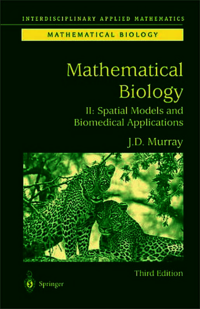
Mathematical Biology II: Spatial Models and Biomedical Applications
Mathematical Biology
47 Visitas | 96 Descargas | 2013-10-02 12:54:54 | alvarojs
In the thirteen years since the ?rst edition of this book appeared the growth of mathematical biology and the diversity of applications has been astonishing. Its establishment as a distinct discipline is no longer in question. One pragmatic indication is the increasing number of advertised positions in academia, medicine and industry around the world; another is the burgeoning membership of societies. People working in the ?eld now number in the thousands. Mathematical modelling is being applied in every major discipline in the biomedical sciences. A very different application, and surprisingly successful, is in psychology such as modelling various human interactions, escalation to date rape and predicting divorce.

A Primer on Scientific Programming with Python
Programación en Lenguaje python utilizando problemas matemáticos y de las ciencias naturales.
132 Visitas | 221 Descargas | 2013-11-27 06:24:39 | abelm
El objetivo del libro es enseñar programación en python utilizando problemas de las matemáticas y las ciencias naturales. Utiliza algunos ejemplos de trabajo con ficheros genéticos(ADN). El Cap1 contiene trabajo introductorio con fómulas en el lenguaje python. Cap2 Ciclos y tipo de datos Lista. Cap3 Funciones. Cap4 Trabajo con ficheros y manejo de errores y excepciones. Cap5 Arreglos y Plotting. Cap6 "Clases" de la POO. Cap7 Números aleatorios y su aplicación a juegos sencillos. Cap9. Programación Orientada a Objetos. Contiene 8 apéndices dedicados fundamentalmente a: trabajo con ecuaciones diferenciales, código python en lenguajes compilados, y otros temas tecnológicos.
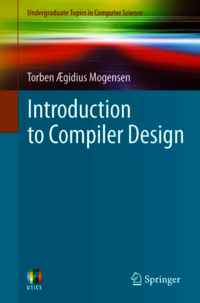
Introduction to Compiler Design
118 Visitas | 228 Descargas | 2014-01-28 19:43:12 | josedanielr
The 1rst chapters of the book describes the methods and tools required to read program text and convert it into a form suitable for computer manipulation. This process is made in two stages: A lexical analysis stage that basically divides the input text into a list of “words”. This is followed by a syntax analysis (or parsing) stage that analyses the way these words form structures and converts the text into a data structure that reflects the textual structure. Lexical analysis is covered in Chap. 1 and syntactical analysis in Chap. 2. The remainder of the book (Chaps. 3–9) covers the middle part and back-end of interpreters and compilers. Chapter 3 covers how definitions and uses of names (identifiers) are connected through symbol tables. Chapter 4 shows how you can implement a simple programming language by writing an interpreter and notes that this gives a considerable overhead that can be reduced by doing more things before executing the program, which leads to the following chapters about static type checking (Chap. 5) and compilation (Chaps. 6–9. In Chap. 6, it is shown how expressions and statements can be compiled into an intermediate language, a language that is close to machine language but hides machine-specific details. In Chap. 7,it is discussed how the intermediate language can be converted into “real” machine code. Doing this well requires that the registers in the processor are used to store thevalues of variables, which is achieved by a register allocation process, as described in Chap. 8. Up to this point, a “program” has been what corresponds to the body of a single procedure. Procedure calls add some issues, which are discussed in Chap. 9. The book uses standard set notation and equations over sets. Appendix contains a short summary of these, which may be helpful to those that need these concepts refreshed.
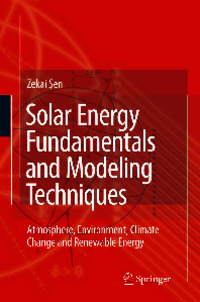
Solar Energy Fundamentals and Modeling Techniques
34 Visitas | 50 Descargas | 2014-04-08 14:14:51 | raulito
Solar radiation is an integral part of different renewable energy resources, in general, and, in particular, it is the main and continuous input variable from the practically inexhaustible sun. Solar energy is expected to play a very significant role in the future especially in developing countries, but it also has potential in developed countries. The material presented in this book has been chosen to provide a comprehensive account of solar energy modeling methods. For this purpose, explanatory background material has been introducedwith the intention that engineers and scientists can benefit from introductory preliminaries on the subject both from application and research points of view.
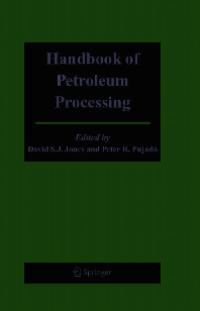
Handbook of Petroleum Processing
23 Visitas | 57 Descargas | 2014-04-08 14:52:20 | raulito
This reference work targets researchers who have chosen a career in this complex but essential industry as well as people who are new in the industry and are looking for easy references to the work in which they are involved. This Handbook is an essential addition to the libraries of universities which contain a chemical engineering faculty as well as to the libraries of engineering construction companies, and oil refineries

A History of Thermodynamics. The Doctrine of Energy and Entropy
29 Visitas | 45 Descargas | 2014-04-09 17:18:40 | raulito
The most exciting and significant episode of scientific progress is the development of thermodynamics and electrodynamics in the 19th century and early 20th century. The nature of heat and temperature was recognized, the conservation of energy was discovered, and the realization that mass and energy are equivalent provided a new fuel, – and unlimited power. Much of this occurred in unison with the rapid technological advance provided by the steam engine, the electric motor, internal combustion engines, refrigeration and the rectification processes of the chemical industry. The availability of cheap power and cheap fuel has had its impact on society: Populations grew, the standard of living increased, the environment became clean, traffic became easy, and life expectancy was raised. Knowledge fairly exploded. The western countries, where all this happened, gained in power and influence, and western culture – scientific culture – spread across the globe, and is still spreading.

Missile Guidance and Control Systems
35 Visitas | 105 Descargas | 2014-04-10 16:19:51 | raulito
The intent of this book is to present the fundamental concepts of guided missiles, both tactical, and strategic and the guidance, control, and instrumentation needed to acquire a target. In essence, this book is about the mathematics of guided flight. This book differs from similar books on the subject in that it presents a detailed account of missile aerodynamic forces and moments, the missile mathematical model, weapon delivery, GPS (global positioning system) and TERCOM(terrain contour matching) guidance, cruise missile mechanization equations, and a detailed analysis of ballistic guidance laws. Moreover, an attempt has been made to give each subject proper emphasis, while at the same time special effort has been put forth to obtain simplicity, both from the logical and pedagogical standpoint. Typical examples are provided, where necessary, to illustrate the principles involved. Numerous figures give the maximum value of visual aids by showing important relations at a glance and motivating the various topics. Finally, this book will be viii Preface of benefit to engineers engaged in the design and development of guided missiles and to aeronautical engineering students, as well as serving as a convenient reference for researchers in weapon system design.

Fundamentals of Airplane Flight Mechanics
39 Visitas | 68 Descargas | 2014-05-08 16:21:40 | raulito
Flight mechanics is the application of Newton’s laws (F=ma and M=I) to the study of vehicle trajectories (performance), stability, and aerodynamic control. There are two basic problems in airplane flight mechanics: (1) given an airplane what are its performance, stability, and control characteristics? and (2) given performance, stability, and control characteristics, what is the airplane? The latter is called airplane sizing and is based on the definition of a standard mission profile. For commercial airplanes including business jets, the mission legs are take-off, climb, cruise, descent, and landing. For a military airplane additional legs are the supersonic dash, fuel for air combat, and specific excess power. This text is concerned with the first problem, but its organization is motivated by the structure of the second problem. Trajectory analysis is used to derive formulas and/or algorithms for computing the distance, time, and fuel along each mission leg. In the sizing process, all airplanes are required to be statically stable. While dynamic stability is not required in the sizing process, the linearized equations of motion are used in the design of automatic flight control systems. This text is primarily concerned with analytical solutions of airplane flight mechanics problems. Its design is based on the precepts that there is only one semester available for the teaching of airplane flight mechanics and that it is important to cover both trajectory analysis and stability and control in this course. To include the fundamentals of both topics, the text is limited mainly to flight in a vertical plane. This is not very restrictive because, with the exception of turns, the basic trajectory segments of both mission profiles and the stability calculations are in the vertical plane. At the University of Texas at Austin, this course is preceded by courses on low-speed aerodynamics and linear system theory. It is followed by a course on automatic control.

Mixture Formation in Internal Combustion Engines
24 Visitas | 33 Descargas | 2014-05-08 17:44:28 | raulito
This book may serve both as a graduate level textbook for combustion engineering students and as a reference for professionals employed in the field of combustion engine modeling. The research necessary to write this book was carried out during my employment as a postdoctoral scientist at the Institute of Technical Combustion (ITV) at the University of Hannover, Germany. The text was accepted in partial fulfillment of the requirements for the postdoctoral Habilitation-degree by the Department of Mechanical Engineering at the University of Hannover.
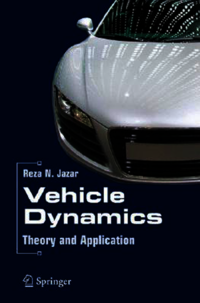
Vehicle Dynamics: Theory and Application
27 Visitas | 43 Descargas | 2014-05-08 18:32:52 | raulito
This text is for engineering students. It introduces the fundamental knowledge used in vehicle dynamics. This knowledge can be utilized to develop computer programs for analyzing the ride, handling, and optimization of road vehicles. Vehicle dynamics has been in the engineering curriculum for more than a hundred years. Books on the subject are available, but most of them are written for specialists and are not suitable for a classroom application. A new student, engineer, or researcher would not know where and how to start learning vehicle dynamics. So, there is a need for a textbook for beginners. This textbook presents the fundamentals with a perspective on future trends.
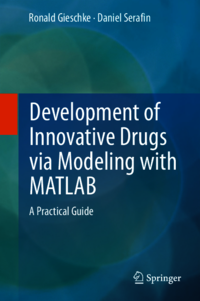
Development of Innovative Drugs via Modeling with MATLAB
45 Visitas | 69 Descargas | 2015-01-07 16:57:21 | raulito
bout 20 years ago, the pharmaceutical industry started to consider mathematical model-based drug development as a means to streamline the execution of drug development programs. This constituted a new discipline, pharmacometrics, grounded in pharmacology and statistics. We have written this book to describe our learning and experiences in the emergent field of pharmacometrics applied to drug discovery and clinical devel- opment. We did not aim to compete with the many excellent contributions in this field, both theoretical and practical, but rather wanted to highlight specific areas that we have repeatedly encountered. This book may also give answers to those who wonder to what kind of problems mathematics is actually applied in the modeling and simulation department of a large pharmaceutical company. Parts of this book require some familiarity with mathematical notation and elementary calculus including the concept of a differential equation. Besides providing some concepts behind drug discovery and development, we have added many exercises (with our solutions) designed to be solved symboli- cally or programmatically. As a programming language, we chose MATLAB (Version 2012b) as we found it best suited to the diversity of problems we faced. Our final message is that pharmacometrics could have an even larger impact on drug discovery and development if it were consistently applied to diseases and their potential treatment targets, thus merging with another quantitative discipline, systems biology, to form quantitative systems pharmacology. The book is organized into nine chapters. Background of Pharmacologic Modeling ( Chap. 1 ) introduces two topics which underpin later chapters: the emergence, role, and tasks of the pharmaceutical industry as a healthcare provider; and the philosophy of modeling and simulation. Regarding modeling, we start with a First Example of a Computational Model ( Chap. 2 ) from oncology to introduce physiologic, pharmacologic, and computational concepts that are explained and detailed in later chapters. Differential Equations in MATLAB (Chap. 3) provides the numerical and symbolic treatment of ordinary differential equations with time and state event scheduling. Pharmacologic Modeling (Chap. 4) is about dynamic concepts in relationship to drugs. This entails the modeling of drug concentrations and related body responses over time. Disease Modeling (Chap. 5) adds another component. As drugs work on a diseased human body, a model-based under- standing of how the body functions under the disease will be of value to learn how

Advances in Bioethanol
24 Visitas | 38 Descargas | 2015-01-07 17:16:18 | raulito
Disadvantages of fossil fuel derived transportation fuels (greenhouse gas emissions, pollution, resource depletion, unbalanced supply-demand relations) are strongly reduced or even absent with biotransportation fuels. Of all biofuels, ethanol is already produced on a fair scale. It produces slightly less greenhouse emissions than fossil fuel (carbon dioxide is recycled from the atmosphere to produce biomass); can replace harmful fuel additives (e.g., methyl tertiary butyl ether) and produces jobs for farmers and refinery workers. It is easily applicable in present day internal combustion engine vehicles (ICEVs), as mixing with gasoline is possible. Ethanol is already commonly used in a 10 % ethanol/90 % gasoline blend. Adapted ICEVs can use a blend of 85 % ethanol/15 % gasoline (E85) or even 95 % ethanol (E95). Ethanol addition increases octane and reduces carbonmonoxide, volatile organic carbon and particulate emissions of gasoline. And, via on board reforming to hydrogen, ethanol is also suitable for use in future fuel cell vehicles (FCVs). Those vehicles are supposed to have about double the current ICEV fuel efficiency. Ethanol production and use has spread to every corner of the globe. As concerns over petroleum supplies and global warming continue to grow, more nations are looking to ethanol and renewable fuels as a way to counter oil dependency and environmental impacts. World production reached an all-time high of nearly 23 billion gallons in 2010 and is expected to exceed 1,20,000 million mark by the end of the year 2020. While the US became the world’s largest producer of fuel ethanol in 2010, Brazil remains a close second, and China, India, Thailand and other nations are rapidly expanding their own domestic ethanol industries. Increased production and use of ethanol have also led to a growing international trade for the renewable fuel. While the vast majority of ethanol is consumed in the country in which it is produced, some nations are finding it more profitable to export ethanol to countries like the US and Japan. High spot market prices for ethanol and the rapid elimination of MTBE by gasoline refiners led to record imports into the US in the last few years. More than 500 million gallons of ethanol entered through American ports, paid the necessary duties, and competed effectively in the marketplace. The increased trade of ethanol around the world is helping to open up new markets for all sources of ethanol. The sustainable production of bioethanol requires well planned and reasoned development programs to assure that the many environmental, social and economic concerns related to its use are addressed adequately. The key for making ethanol competitive as an alternative fuel is the ability to produce it from low-cost biomass. Many countries around the world are working extensively to develop new technologies for ethanol production from biomass, from which the lignocellulosic materials conversion seem to be the most promising one. This e-book provides an updated and detailed overview on Advances in Bioethanol. It looks at the historical perspectives, chemistry, sources and production of ethanol and discusses biotechnology breakthroughs and promising developments, its uses, advantages, problems, environmental effects and characteristics. In addition, it presents information about ethanol in different parts of the world and also highlights the challenges and future of ethanol.

Algae for Biofuels and Energy
20 Visitas | 36 Descargas | 2015-01-07 17:21:59 | raulito
This book focuses on microalgae rather than seaweeds, as microalgae are the most attractive for renewable energy production, especially the production of biodiesel, although seaweed biomass can also be used. The aim of this book is to review in detail the most important aspects of the microalgae-to-bioenergy process, with an emphasis on microalgae as sources of lipids for the production of biodiesel and as potential sources of hydrogen. The book is meant as a guide and resource for both the experienced practitioners in the fi eld and to those newer to this exciting fi eld of research. However, no single book can cover all aspects of the production of bioenergy from algae; for example, we do not cover the fermentation of algal biomass to produce methane, nor the fermentation of algal sugars to ethanol or butanol. This book begins (Chap. 1 ) with an introduction to the history and developments over the last 80 years or so in the area of large-scale and commercial-scale culture of microalgae and the extensive literature that is available. Much can be learned from the extensive research that has been carried out, and by knowing this history (some of which is not easily accessible) we can avoid repeating past mistakes.
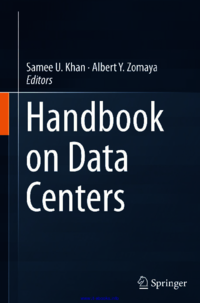
Handbook on Data Centers
52 Visitas | 88 Descargas | 2015-10-01 21:24:24 | cbustillo
This handbook offers a comprehensive review of the state-of-the-art research achievements in the field of data centers. Contributions from international, leading researchers and scholars offer topics in cloud computing, virtualization in data centers, energy efficient data centers, and next generation data center architecture. It also comprises current research trends in emerging areas, such as data security, data protection management, and network resource management in data centers. Specific attention is devoted to industry needs associated with the challenges faced by data centers, such as various power, cooling, floor space, and associated environmental health and safety issues, while still working to support growth without disrupting quality of service. The contributions cut across various IT data technology domains as a single source to discuss the interdependencies that need to be supported to enable a virtualized, next-generation, energy efficient, economical, and environmentally friendly data center.

Advances in Geophysical and Environmental Mechanics and Mathematics
21 Visitas | 14 Descargas | 2017-02-14 06:09:52 | raulito
Fluid and thermodynamics (FTD) are generally taught at technical universities as separate subjects and this separation can be justified simply by reasons of the assigned time; the elements of each subject can be introduced within a semester of *15 weeks. Most likely, these outer educational boundaries may even have well furthered this separation. Intellectually, the two subjects, however, belong together, especially since for all but ideal fluids the second law of thermodynamics imposes constraint conditions on the parameters of the governing equations (generally partial differential equations) that are then used in the fluid dynamic part of the joint effort to construct solutions to physically motivated initial boundary value problems that teach us important facts of the behavior of the motion of the fluid under certain circumstances.

Green Energy and Efficiency An Economic Perspective
13 Visitas | 15 Descargas | 2017-02-14 06:56:31 | raulito
The Low Carbon Programme (LCP) is a joint initiative by the Basque Centre for Climate Change (BC3) and The University of the Basque Country (UPV-EHU) funded by the Repsol Foundation. The LCP was set up to promote research in energy economics and climate change and contribute to deliver a low carbon future. Addressing climate change has become not only an environmental necessity, but also an economic opportunity and a mainstay of energy and economic policies. The reduction of carbon emissions, the expansion of renewable energy capability and the improvement of energy efficiency are three key elements for climate policy on a global level. This book is devoted to the third of these key elements: energy efficiency. In doing so it reflects the Repsol Foundation’s commitment to the matter and strives to help mainstream the concept of energy efficiency in a socially and economically inclusive manner. The Repsol Foundation created the Energy Observatory in 2008 as part of its commitment to encouraging a new energy model and moving towards a new energy economy. One of the four priority lines of the observatory is the “Promotion of knowledge, research and innovation in areas related to energy and efficient energy use”.

Electric and Hybrid Buses for Urban Transport Energy Efficiency Strategies
11 Visitas | 8 Descargas | 2017-02-14 06:58:11 | raulito
Nowadays, the urban transport is one of the most challenging areas of research in terms of timing, efficiency, transport capacity, and nevertheless pollution reduction. Electrification of the urban transport is not a new approach, but the technologies used these days are. Electric urban transport without the limitation of the tram tracks and the electric lines of the trolleybus becomes one of the most attractive present solution in terms of efficiency, coverage, and versatility taking into account the fixed specific tracks of the urban transport. The solutions presented in this book in terms of strategies for usage of the electric and hybrid urban buses for designated urban arrears, it is based on a complete approach that there is on the scientific agenda nowadays. I dare to say that by using the solution of energetic efficiency for specific electric and hybrid urban buses any local community can develop its own solution taking into account the fact that the authors have provided a virtual solution for specific road infrastructure development, for electric and hybrid power train configuration, and for various charging and load capacities. The amount of technicalities in this book will offer automotive and road traffic engineers a clear perspective of what is expected to take into consideration in case of making a decision in terms of electrification of their specific coordinated transport infrastructure. All the data represented by the specific study of the book is presented in terms of charts and graphs as common language for all engineers. The language is clear and concise giving to the reader a simple and concise answer to the questions resulting for the studied topic. I recommend this book to all those to find a proper solution related to the topic of reliability of the electric urban transport supported by urban buses.

Energy Efficiency Benefits for Environment and Society
12 Visitas | 16 Descargas | 2017-02-14 06:59:30 | raulito
Energy efficiency’s ability to meet world energy demand and to address climate change has rapidly improved over the last decade. In many countries (developed and developing), energy efficiency has become the first fuel to meet rising energy demand and the first tool to mitigate carbon emissions. For all researchers interested in this sector, it is essential to understand the rationale for and the drivers behind this international trend. Energy Efficiency: Benefits for Environment and Society delivers on this need. It describes the energy efficiency potential by sector (including industry, transport, commerce, and households) and indicates that while impressive efficiency gains have already been achieved over the past four decades, much more remains. It thoughtfully documents the continuing contribution of efficiency, substantiating a further 50 % reduction in energy consumption and fuel combustion-related Carbon Dioxide (CO2) emissions if the best available technologies and policies are applied worldwide. The volume underscores a second, equally important point: improving energy efficiency in emerging and developing economies will benefit not only these countries, but also the world. The growth of energy use in emerging and developing economies, including China, India, Mexico, Brazil, and South Africa has recently been greater than that of all other countries in the world combined. Such energy consumption growth has caused notable consequences for the rise of international energy prices and carbon emissions. With the right policies in place, the potential for energy efficiency in developing countries can be much greater potential than the Organization for Economic Co-operation and Development (OECD) countries. This means that energy efficiency improvement in developing countries can materially enhance energy security and mitigate international energy supply crises which await us if we fail to act.
Contribuir
Usted puede contribuir con Libros UCLV, es importante para nosotros su aporte..
Contribuir